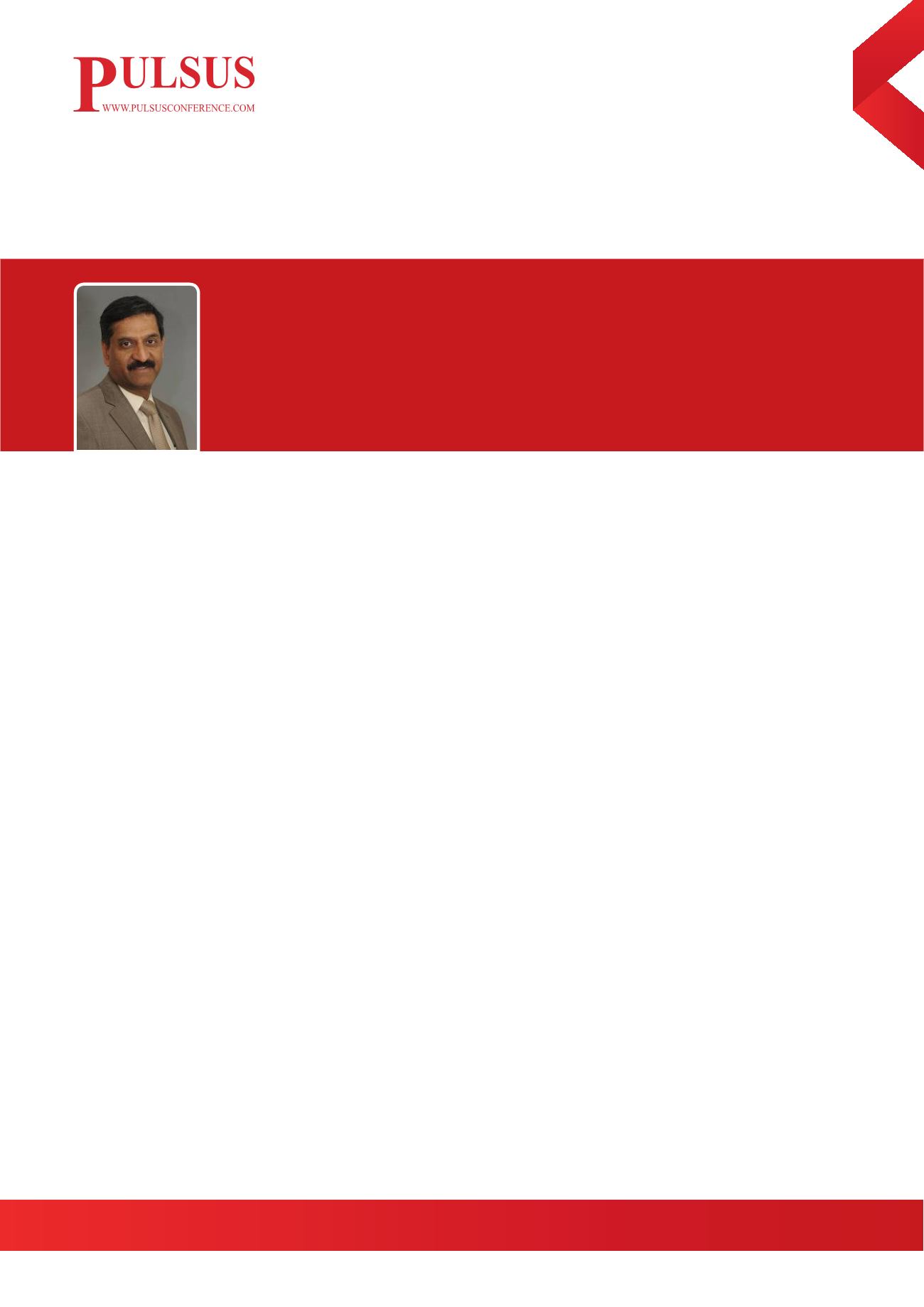

Volume 13
Journal of Orthopaedics Trauma Surgery & Related Research
Arthroplasty 2018
September 24-25, 2018
Page 15
Notes:
Arthroplasty
September 24-25, 2018 London, UK
11
th
International Conference on
Cruciate-retaining total knee replacements for valgus deformity secondary to osteoarthritis: 5.5 years
follow-up survival study
Background & Aim
: Clinical survival studies for cruciate-retaining TKR for valgus knees are very limited in literature. We
present our series of valgus knees secondary to osteoarthritis treated with lateral soft tissue releases and CR-TKR.
Methods
: A survival study of CR-TKR in knee OA with valgus deformity with functional MCL has been performed by
retrospective analysis of hospital data. Revision for any cause is considered the end point. 108 TKR in 102 patients with a
minimum follow up of 1 year, who had a CR-TKR for knee arthritis with valgus deformity between December 2001 and
November 2012 are included in the study.
Results
: Mean follow up is 5.5 years (median 5 years, range 1-14 years). Mean improvement in the valgus angle is 14.28 degrees
2 degrees at 95% CI (Median 14, SD 9 degrees). Mean flexion is 105 degrees (Median 100, range 80-150). 10 patients have died
due to non-orthopedic causes. One patient has non-progressive lucency around the components and has not required revision.
None of the tibio- femoral components have been revised so far. One patient had a fall and dislodged the patellar button which
had to be removed. No instability has been noted in any of the patients during follow up. Two patients have persistent pain, but
investigation has not shown any cause.
Conclusion
: CR components for TKR for knee OA with valgus deformity has shown satisfactory survival at 5 years with low
revision rate when adequate soft tissue balance is achieved at the time of implantation.
Implications
: CR-TKR, which helps preserve femoral bone stock, can be successfully implanted in valgus knees as shown in
our series with 100% survival at an average of 5.5 years when the soft tissues are balanced at time of implantation. However,
long term follow-up is required to ensure there are no late failures.
Biography
Videsh Raut has been working as a Consultant Orthopedic Surgeon at Wrightington Hospital since 1996. He did his basic Orthopedic Training in Bombay, India at the
King Edward Memorial Hospital, University of Bombay and was a Lecturer in Orthopedic Surgery at the university hospital before coming to the UK. He trained in UK as a
Registrar in Orthopedics at Oswestry on a 3-year rotation. His Senior Registrar Rotation was at Birmingham working at the Royal Orthopaedic Hospital in Birmingham and
the Coventry District General Hospital. During his training period he acquired a master’s degree in Orthopedic Surgery (M.Ch.Orth.) from the University of Liverpool and
from the University of Bombay (M.S.Orth.). He secured the Specialty Fellowship in Orthopedics from the Royal College of Surgeons of Edinburgh.
hematar@doctors.org.uk Videsh.Raut@wwl.nhs.ukVidesh Raut
Wrightington Hospital, UK
Videsh Raut, J Arthroplasty 2018, Volume 13
















